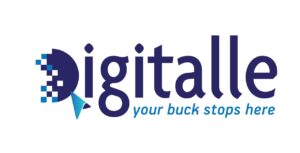Remember the days of rote memorization and textbooks as the sole source of knowledge? Gone are those days. Educational technology (EdTech) is sweeping through classrooms, transforming the way students learn and teachers teach. It is no longer just about chalkboards and lectures; EdTech is injecting a dose of fun, engagement, and personalization into the learning experience.
This blog dives into the exciting world of EdTech and explores how it is reshaping classrooms for the better.

Engagement is Key: Making Learning Interactive and Fun
Let us face it, traditional classroom setups can sometimes feel stagnant. EdTech injects a dose of excitement by making learning interactive and engaging.
Here is how:
- Gamification: Educational games turn learning into a fun challenge. Students can embark on virtual quests, solve puzzles, and compete with peers in a safe, educational environment. Games can make complex concepts more relatable and encourage critical thinking and problem-solving skills.
- Interactive Whiteboards and Tablets: Static whiteboards are a thing of the past. Interactive whiteboards allow for dynamic presentations, collaborative activities, and real-time feedback. Similarly, tablets provide students with a personalized learning experience, allowing them to access educational apps, participate in polls, and take interactive quizzes.
- Virtual Reality (VR) and Augmented Reality (AR): These immersive technologies take students on virtual field trips, allowing them to explore historical sites, dissect a frog in a virtual lab, or witness scientific phenomena firsthand. AR overlays digital elements onto the real world, creating interactive learning experiences that blur the lines between classroom and environment.
Personalized Learning: Catering to Individual Needs
EdTech is not just about bells and whistles; it’s about tailoring education to individual needs. Here’s how technology empowers personalized learning:
- Adaptive Learning Platforms: These platforms use algorithms to assess a student’s strengths and weaknesses, then adjust the difficulty and content of the learning material accordingly. This ensures students are challenged without feeling overwhelmed and allows them to progress at their own pace.
- Digital Learning Resources: The internet provides a vast library of educational resources, from online tutorials and video lectures to interactive simulations and e-books. Students can access these resources anytime, anywhere, allowing them to delve deeper into topics that pique their interest or revisit concepts that need clarification.
- Differentiation Tools: Teachers can leverage technology to create differentiated learning experiences. They can utilize online tools to create customized lesson plans, worksheets, and assignments that cater to different learning styles and abilities.
Collaboration and Communication: Fostering a Connected Classroom
Learning does not happen in isolation. EdTech fosters collaboration and communication, creating a more connected learning environment:
- Cloud-Based Collaboration Tools: Platforms like Google Classroom and Microsoft Teams allow students to work together on projects in real-time, even if they are geographically dispersed. This fosters teamwork, communication skills, and problem-solving in a collaborative setting.
- Video Conferencing: Connecting with experts and peers from around the world is no longer a dream. Video conferencing allows students to participate in virtual discussions, presentations, and guest lectures, enriching their learning experience with diverse perspectives.
- Social Learning Platforms: Educational social media platforms like Edmodo allow students to connect with peers, share resources, and participate in online discussions. This fosters a sense of community and allows students to learn from each other.
Challenges and Considerations: Finding the Right Balance
While EdTech offers a plethora of benefits, it is important to acknowledge some challenges:
- Digital Divide: Unequal access to technology and the internet can exacerbate existing educational inequalities. Schools and educators need to find ways to bridge the digital divide and ensure all students have access to these tools.
- Screen Time Concerns: Finding a balance between technology use and traditional learning methods is crucial. Educators need to design lesson plans that integrate technology thoughtfully, ensuring students do not become reliant solely on screens for learning.
- Teacher Training: Integrating technology effectively requires proper training and support for teachers. They need to learn how to leverage EdTech tools effectively, create engaging lessons, and assess student progress in this new digital landscape.
The Future of Learning: A Collaborative Journey
The future of learning is undeniably intertwined with EdTech. As these technologies continue to evolve, classrooms will become even more dynamic and interactive. However, it’s important to remember that technology is a tool, not a replacement for quality teachers. The human element of education remains vital, and EdTech should empower teachers, not replace them.
By harnessing the power of EdTech, educators can create engaging learning experiences that cater to individual needs, foster collaboration, and ignite a passion for learning in every student. This collaborative journey between educators, technology, and students paves the way for a brighter future of education, where learning is not just about memorization, but about exploration, discovery, and a love for knowledge.
